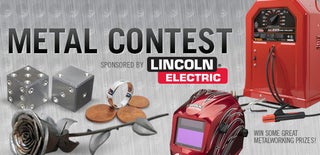Introduction: Toolbox Restoration and Retrofit
I am a student at Georgia Tech, about to graduate and move out on my own. I love making things, but have mostly been using my father’s tools in his garage up to this point. So my grandfather gave me an old toolbox filled with old tools to help me start my own tool collection with a good place to put them. However, the toolbox was a little rusty, the paint was not in the best shape, and the felt inside of the drawers was all messed up and covered in grime.
With a little work I was able to fix it up, make it look brand new, add some speakers, but still keep some of the vintage feel of the box. While this instructable was made for this specific toolbox, a lot of the steps will be generalized and could be helpful for other toolboxes or general restorations or retrofits. This is my first instructable, so any feedback would be appreciated.
Step 1: Planning, Materials, and Tools
At this stage, I had a toolbox and all I knew was that I wanted it looking new. I noticed a few key points that I wanted to keep intact, to preserve part of its history. These points were the stamp on the top, and two stickers telling the brand of the box. The Champion sticker came off the box easily, so I removed it. However, it ended up breaking apart and I lost part of it.
Materials
Toolbox
Computer Speakers
Electrical Tape
Wire
Solder
Sandpaper- a course grit and a fine grit, I used 60 and 400
Painters Tape
Rustoleum Spray Paint- the primer and the color
Paint thinner or mineral spirits
1/2” Drawer Knobs
Sheet Metal
Rivets
Rubber Washers
Steel Washers
Rubber Drawer Liner
All Purpose Lubricant
Tools
Hammer
“Metal Shims”
Drill and drill bits
Electric Sander
Razor/ Box Cutter/ X-acto Knife
Table Vice
Scroll Saw or other tool to cut sheet metal
Plyers
Screwdrivers
Soldering Iron
Rivet Gun
Scissors
Step 2: Deconstruction
When taking apart anything, you want to make sure you can put it back together. The drawer slides did not appear as if they were designed to be removed, but to clean out the inside of the box and drawers, I had to remove them. First I examined them to determine how they fit together, and found that it was a slightly bent piece of metal keeping the drawer in. So with a little bit of force and two thin, metal shims, I was able to separate the drawer slides from each other by pushing the metal shims into the slide and pulling out the drawers. I tested this method with the most banged up drawer, then I tried sliding it back in. It locked back into place, so I removed all of the drawers in the same fashion.
Next, I removed all of the latches from the box. They were riveted in, so I used the drill and drilled off the head of the rivet. To do this, use a drill bit that is slightly smaller than the size of the hole that the rivet is in. It should disconnect the back end of the rivet from the middle and front end. The latches came off easily, and I made sure to keep the bottom half of the latches matched up with the corresponding top half to ensure a good fit later.
Step 3: Cleaning and Painting
First, the old felt was pulled out, and large chunks of glue residue were removed with hand sanding. Then I used the Orbital Sander and sanded the whole box with 60 grit sandpaper, mostly to remove any rust, but also to get rid of some of the old paint.
I purchased two types of spray paint for metal use. One gray colored, primer + paint that, not only can be be painted over rust, but is supposed to help guard against rust. The second was simply old gold colored spray paint. Before I could begin painting, I had to cover all of the locations that I wanted protected from the paint with painters tape, so I covered the “Union” sticker on the front and the handle on the top. I laid everything out and gave it a first coat in the primer + paint. I waited for everything to dry to the touch (about 10 minutes), then flipped the drawers over and laid the toolbox down to get the other sides painted. After painting the primer, I carefully removed the painters tape that was covering the “Union” sticker.
Next, I painted the insides of the drawers with the gold paint. I did not want the top lip of the drawers to be gold, so I shielded them with a piece of poster board and sprayed from directions to avoid painting the outside. I was not too worried about over spray on the other pieces, as some gold specs wouldn't look so bad. Using a piece of painters tape would be more reliable for shielding the drawer, but I found this to work just fine. I then painted the inside of the top of the toolbox gold as well.
Then it was time to prepare the top of the box for the gold stripes. Using painters tape and paper, I masked off the portions that I wanted to remain gray, and then I painted it gold. I removed the painters tape before it was dry to avoid peeling up some of the dry paint with it. However, I made the mistake of letting the tape bump into the newly painted surface when I removed it, and it took some of the paint with it. So I put a small amount of tape back on, and painted over that mistake. It didn't end up mattering, though, since I should not have added this paint detail yet anyway, as the box still needed another coat of primer.
In the last picture above, you can see where the paint is already peeling away. This is the only location it did this, and I am guessing it is because I did not get completely rid of the rust at this location. I wasn't able to get rid of the rust, as it was among the embossed section, and I wanted to preserve that.
Between coats, I sanded the box with 400 grit sandpaper and cleaned off the sanding dust. I then repeated the above steps. It was a lot of work, but now the paint looks better, and is less likely to chip or scratch off easily when the toolbox is in use.
Step 4: Adding Speakers
I took some old computer speakers and removed the plastic casing. I desoldered the speakers wires to get them out of the casing, making note of where they were so I could put them back. I played around with the positioning of the speakers to see where I wanted them, and decided to put them in the front so I could play music even with the lid closed.
In order to hear the sound well, I needed to drill holes in the front of the box, so I planned out multiple patterns. My fiancee came up with the idea for drilling the holes into the patterns of my initials, so I drew out the holes into a pattern of an “S” and cut out the pattern to use. I needed holes in the front to mount the speakers to, so I decided to put those as close to the edge as I could. When drilling out holes in sheet metal, it is good to create an indentation for the drill bits, so they do not wander. After marking out the pattern with a pencil, I used a nail and a hammer to create these indentations.
In order to keep the speakers safe, I designed sheet metal guards to go behind the speakers. They would later be secured to the front using the same holes drilled for the speakers, along with two holes on the sides. The guards were made using scrap sheet metal that I cut using a scroll saw with a metal bit. This was a difficult step, as the scroll saw was not intended to cut such thin metal. An alternate sheet metal cutting tool would be more useful. A table vice and hammer were used to get nice, 90 degree bends.
They were designed to have enough room behind the speakers to house the power and volume controller. I wanted to be able to plug it in from the outside, so I drilled two holes in the side, one for the power and one for the aux cable. I desoldered the power outlet from the speaker circuit board, added a length of wire, and hot glued it to the inside of the box.
Rubber washers were needed between the speaker and the metal to prevent vibration of metal on metal while sound was playing. Metal washers were also needed on the back side to give the rivet something to grip. On the sides with the guard, I didn't need to use metal washers. Since I needed to slide all 4 of the rivets through the box, rubber washers, speaker holes, and metal washers (or guard) all at the same time, I hot glued the washers to the speakers and taped the rivets to the box with electrical tape. After sliding them all together, I double checked that the washers were all still in place before I riveted them.
Step 5: Finishing the Drawers
I measured out the size of the drawers and cut out black, rubber drawer liner using scissors. This should help stop the tools from moving around so much and keep them safe. I did not glue them down, since they are designed to not slide. It is also good to leave them loose so, if something spills, it is much easier to clean out the drawer.
I did not remove the knobs on the drawers yet, since I didn't know if I could find some inexpensive ones. I found some 1/2” drawer knobs that were designed for a doll house.
Once I got them, I drilled out the old knobs (they were held in by rivets) and replaced them with the new ones. The given bolts were too long, so I cut them shorter with a hacksaw. When cutting the bolts, I put a nut on the bolt past where I was cutting. Then after cutting, when I loosened the nut, it got rid of the burrs and allowed the bolt to be used. I attached the knobs to the drawers, and put the drawers back into the box. In a few locations, the slides did not lock, so I used a hammer and a nail to bend in the locking piece a little more.
Step 6: Finishing Touches
I riveted in the latches that I had removed earlier, took the tape off of the handle, and used super glue to glue the “Champion” sticker back on. I used all-purpose lubricant to make the drawers slide better. I sorted and cleaned my new tools and put them into the drawers. While sorting, I got to listen to music played out through the speakers that I had installed. I found out that closing the lid increases the intensity of the bass while leaving it open has a unique sound of its own.
If there was one thing I would have changed about this project, it would have been the planning stage. When I started, I did not think I was going to add speakers. I also did not think I was going to replace the knobs on the drawers, or I would have removed them before sanding and painting the drawers. Also, you may have noticed that I painted the box, cut the holes for the speakers, then did a second coat. This second coat could have been done immediately, and not 48 hours later, if I had planned ahead and already had the holes drilled.
I would like to thank my Pop-pop for his toolbox, and my Mom, Dad, and fiancee for advice, hints, and help.
Thanks for reading!

Participated in the
Paint It! Sponsored by Olympic Paint

Participated in the
Metal Contest

Participated in the
Vintage Contest








